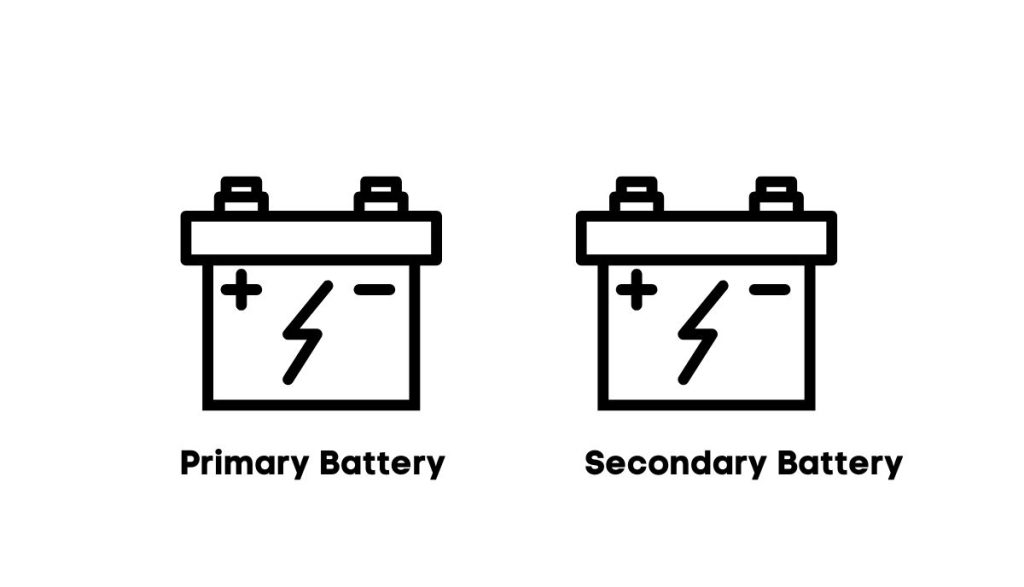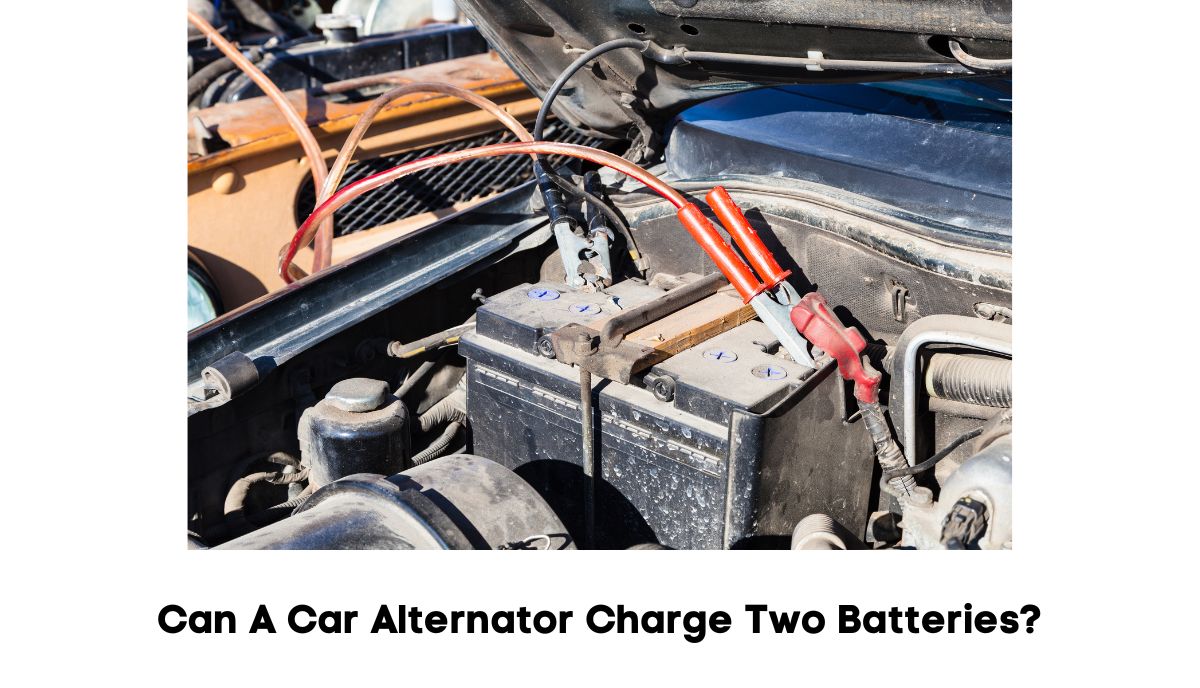The battery and alternator perform different functions, even though they both transmit power. The battery uses stored energy to start the vehicle. The alternator cannot store power. Instead, it turns mechanical energy into electrical energy when the engine runs. That electrical energy operates the car’s electrical components. If you’re tempted to charge two batteries with one alternator, this is what you should know:
1). Why Two Batteries?

A healthy battery has more than enough power to start a vehicle. After all, once it gets the engine running, the alternator takes over. It powers the electronics while recharging the battery.
Unless things go wrong, you don’t have to worry about draining the battery. But what if you add a refrigerator to the vehicle? RVs are packed to the brim with heavy-duty accessories that can’t survive on a conventional battery.
They will deplete it, stranding you in the middle of nowhere with a car that doesn’t have enough charge in the battery to start. According to Auto Spark, a second battery solves this problem by supporting the auxiliary equipment.
The primary battery will continue to provide power to start the engine and execute regular operations. This gives you more room to breathe. You can go camping without depleting the primary battery.
2). Do You Need Two Batteries?
Only if you need the extra power. One battery is more than adequate for most vehicles. A secondary battery only becomes relevant when additional accessories threaten to deplete the primary battery.
Assess your vehicle’s electrical needs. If your total power consumption exceeds the battery’s capacity, add a second battery. Some cars have multiple batteries. Others include a compartment for the second battery in case you decide to install one.
However, most vehicles require some modification because manufacturers design them to accommodate one battery.
3). How Many Batteries Can The Alternator Tolerate?
You can add as many batteries as your vehicle can accommodate. Naturally, the alternator’s rating will determine the time it takes to charge the batteries.
However, even with a weak alternator, every battery in your car will eventually charge to completion. Theoretically, the only limit is the space in your vehicle.
4). How To Charge Two Batteries With One Alternator?
- Install two batteries in a car. You can connect them in series or parallel, depending on the objective you have in mind.
- The isolator will sit between the alternator and the two batteries.
- The current will flow from the alternator to the isolator.
- The isolator will send the power to the two batteries. The isolator doesn’t regulate the voltage. It doesn’t influence the power running to either battery. Instead, it allows multiple batteries to share the power originating from the same alternator. This Pacific Yacht System video compares the isolator to a water valve. It doesn’t operate intelligently.
- The isolator prevents one battery from draining the other. Keep in mind that batteries have different amounts of charge. As its name suggests, the isolator keeps the two batteries isolated.
- If you prefer to charge the second battery with solar power, add a regulator to contend with the high voltage. Some DC-to-DC chargers include solar input. They do a more efficient job of regulating the voltage.
Connecting Two Batteries To The Alternator In Parallel
- Connecting two batteries in parallel increases the amp hours. The voltage stays the same.
- The batteries will last longer because the capacity has grown. However, the batteries will take longer to charge to completion.
- You connect negative to negative and positive to positive.
- According to Battery Stuff, connecting a load to one battery drains them both equally.
Charging Two Batteries In Sequence Using A Battery Isolator
- Connecting two batteries in series increases the voltage. The capacity stays the same.
- For the best results, the voltage and capacity ratings of the batteries should match.
- You connect one battery’s negative terminal to another battery’s positive terminal.
- You need a battery isolator to stand between the batteries. The isolator ensures that the starting battery gets charged first. Once it’s full, the alternator will turn to the secondary battery.
Factors To Consider When Charging Multiple Batteries With An Alternator
- Some people are tempted to replace their alternators. However, the alternator in your car will work. Most drivers don’t require a stronger alternator to charge two batteries.
- The isolator is a different case. The isolator’s current rating should be high enough to withstand the total electrical draw it will encounter. Otherwise, you will destroy it.
- Pay attention to the battery type. A conventional starting battery will start the engine before stepping back and allowing the alternator to run the car’s accessories. One battery guide noted that a starter battery could deliver 300 amps briefly but discharges quickly. A deep-cycle battery can provide 5 – 6 amps for several hours. When it fully discharges, you can recharge it with an external charger.
- The application you have in mind tends to influence your battery selection. For instance, a deep-cycle battery fits accessories with a low current draw. It can work as a second battery in a caravan. On the other hand, if you already have one starter battery but a heavy-duty accessory temporarily requires 300 or more amps, the second battery should be a starter battery or a battery type with a higher capacity.
- Lead acid batteries are decent primary batteries because they can contend with the large burst of power you expect from a starting battery. Absorbent Glass Matt batteries can function as secondary batteries because they last longer and require less maintenance than a traditional battery. Lithium iron batteries are another suitable option for a second battery because they are not as prone to self-discharge as other options.
- Some experts recommend an on/off switch that shifts to the second battery to charge it while you drive and then disconnects it when you stop. This prevents the additional accessories from draining the primary battery. Travelers with kitchen appliances in their RVs will appreciate this switch.
Load Distribution And Battery Management In Dual Battery Systems
- In the absence of sophisticated technology, some people will manually move the cables from one battery to another to change the battery the alternator will charge when you start the engine. While this approach is inexpensive, it is also inconvenient, especially if you own a modern vehicle that requires a reset whenever you disconnect the battery.
- A high-amperage switch is safe because it allows the alternator to charge the secondary battery while you drive. The battery disconnects when you park.
- The automatic solenoid is much easier because it performs this task automatically. It only connects the secondary battery to its starting counterpart when the engine is running. The solenoid disconnects the two once you turn the ignition off. Unlike the high-amperage switch, you don’t have to remember to switch between the batteries when you start and stop the car.
- The four-way switching mechanism is manual. You can determine the role each battery will play.
- Electronic battery management systems are similar to the solenoid. They automatically isolate and charge the second battery. Some systems can temporarily run your accessories using the starting battery. They only switch to the secondary battery when the primary battery reaches a specific discharge level.
Upgrading A Car’s Electrical System To Accommodate Two Batteries
- Adding a second battery isn’t always easy. If the car was designed with one battery in mind, you could add a steel tray to the engine bay, one strong enough to handle the second battery’s weight even when you traverse rough conditions. You don’t want the tray and its battery to fall out because of the vibrations.
- If you’re lucky, your vehicle may include an extra compartment for the second battery. Some manufacturers will also sell you durable trays for the second battery.
- If you don’t have room under the hood, you can install the second battery anywhere else, including the rear.
- Don’t configure the vehicle yourself. You need an expert to perform this task because fitting a new battery may involve relocating other components, including the power steering reservoir. A mechanic can select a position that doesn’t compromise the vehicle’s balance because of the added weight from the battery.
- The limited space may compel you to select a smaller battery than what you prefer.
- The second battery shouldn’t neighbor strong heat sources.
- Don’t forget to include an isolator. Connect the primary battery’s positive terminal to the isolator’s positive terminal. Do the same for the primary and secondary battery’s negative terminals (connect them). You can finish by running a line between the secondary battery and the isolator’s negative terminals. Make sure you ground the isolator.
- Caravans and RV owners should invest in backup charging systems, such as solar panels and small generators.
- Expect the isolator and wiring for a second battery to cost you a few hundred dollars. That includes the mounting tray and low gauge wiring.

